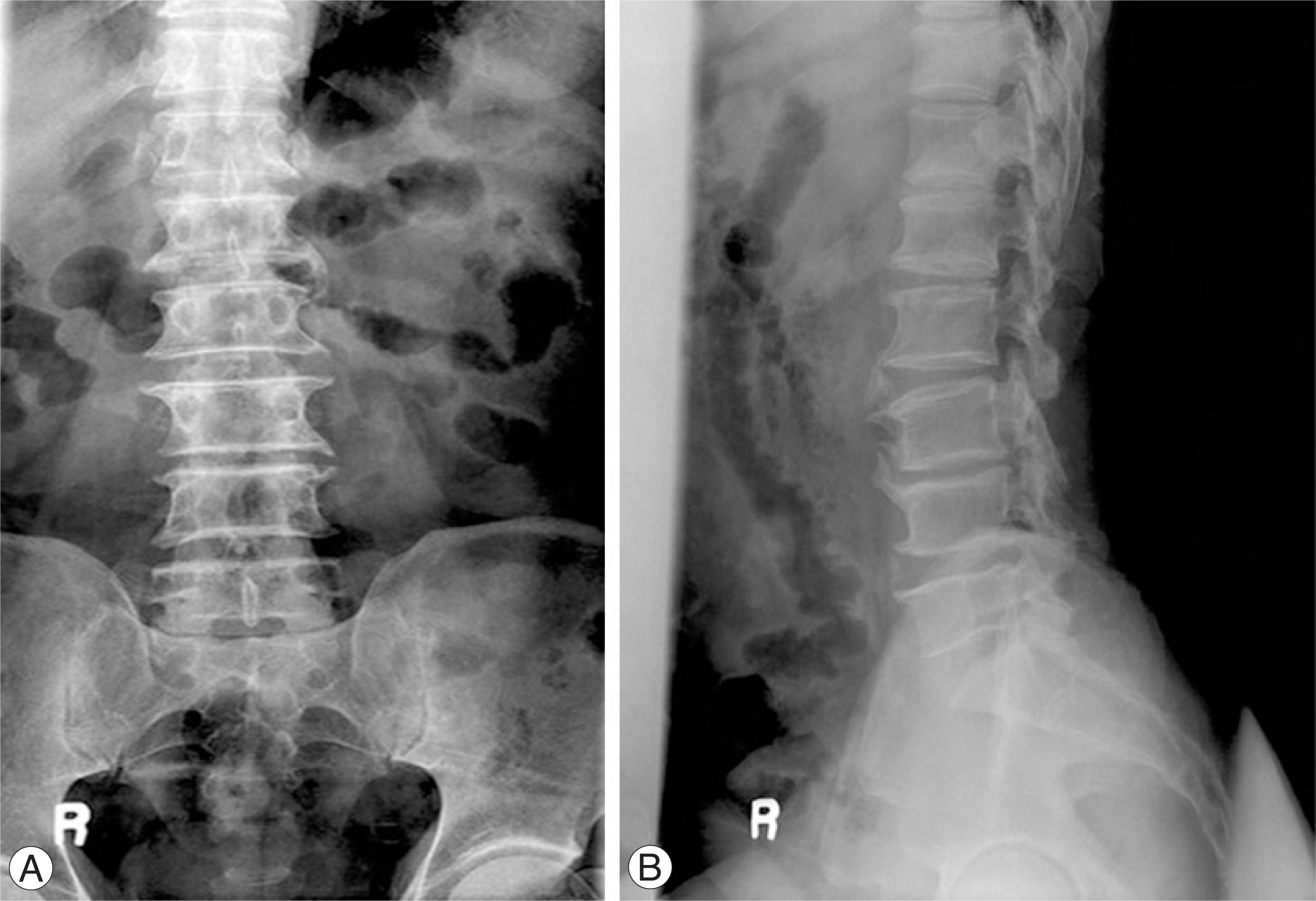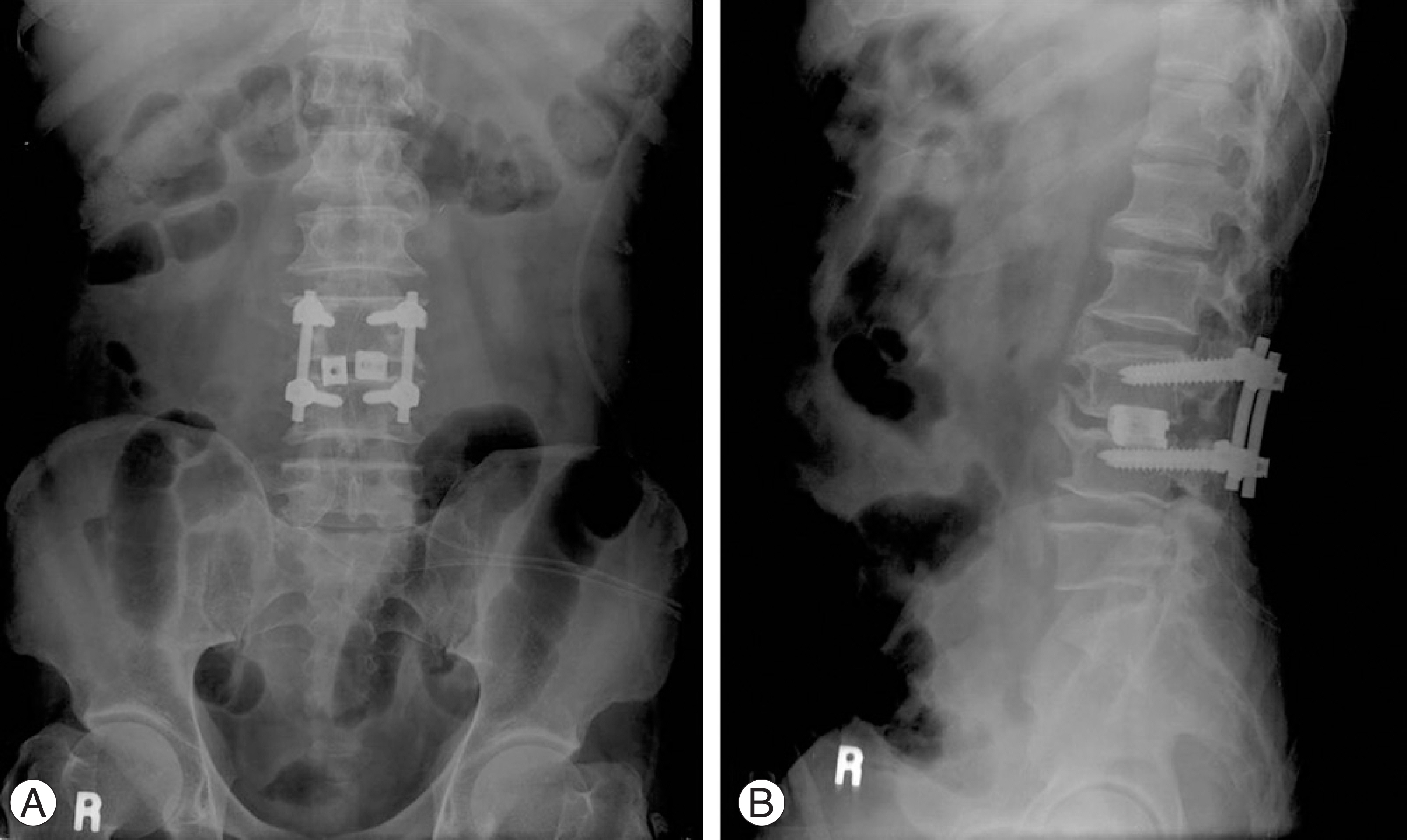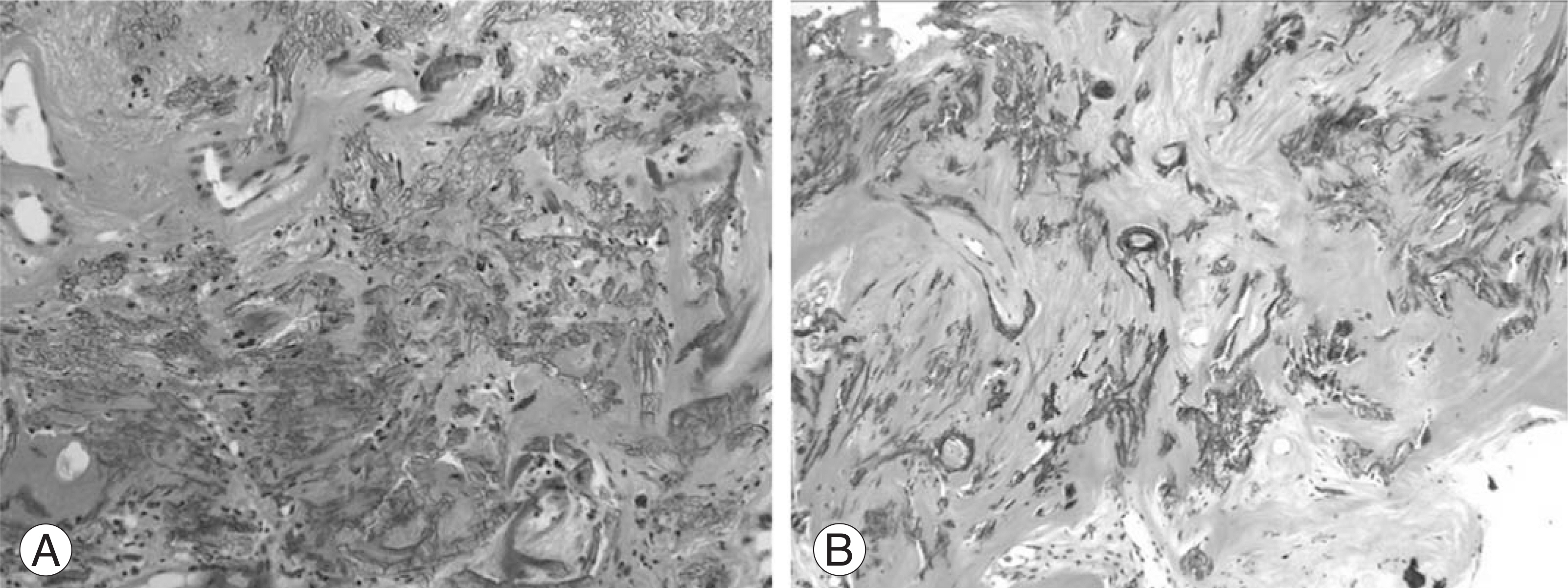J Korean Soc Spine Surg.
2009 Mar;16(1):54-58. 10.4184/jkss.2009.16.1.54.
Gossypiboma Encountered 40 Years after Lumbar Partial Laminectomy: A Case Report
- Affiliations
-
- 1Department of Orthopedic Surgery, Handong University Sunlin Hospital, Pohang, Korea.
- 2Department of Neurosurgery, Handong University Sunlin Hospital, Pohang, Korea.
- 3Department of Orthopedic Surgery, Wallace Memorial Baptist Hospital, Busan, Korea. msh124@paran.com
- KMID: 1473391
- DOI: http://doi.org/10.4184/jkss.2009.16.1.54
Abstract
- Gossypiboma is a mass within body consisting of a cotton matrix surrounded by a foreign-body reaction. Some patients may remain asymptomatic, while others develop early persistent infected conditions. Gossypiboma should be included in a differential diagnosis of a paravertebral mass in postoperative patients, and a thorough and a careful inspection of the surgical field before closure must be performed by surgeons to avoid the complications of gossypiboma even when there are correct counts. We present a patient in whom a gossypiboma at the 4th lumbar spine was encountered 40 years after a partial laminectomy with no subjective symptoms.
Keyword
Figure
Reference
-
01). Rajput A., Loud PA., Gibbs JF., Kraybill WG. Diagnostic challenges in patients with tumors: case 1. Gossypiboma (foreign body) manifesting 30 years after laparotomy. J Clin Oncol. 2003. 21:3700–3701.02). Suh DH., Kim EC. Pathologic fracture of femoral neck due to mass suspicious of gossypiboma in proximal thigh. -case report-. J Korean Hip Soc. 2006. 18:493–497.
Article03). Rappaport W., Haynes K. The retained surgical sponge following intra-abdominal surgery. A continuing problem. Arch Surg. 1990. 125:405–407.04). Bevernage C., Geusens E., Nijs S. Case report: a gossypiboma in the shoulder. Emerg Radiol. 2006. 12:231–233.
Article05). IS M., Karatas A., Akgul M., Yildirim U., Gezen F. A retained surgical sponge (gossypiboma) mimicking a paraspinal abscess. Br J Neurosurg. 2007. 21:307–308.
Article06). Van Goethem JW., Parizel PM., Perdius D., Hermans P., De Moor J. MR and CT imaging of paraspinal textilo-ma(gossypiboma). J Comput Assist Tomogr. 1991. 15:1000–1003.07). Yuh-Feng T., Chin-Chu W., Cheng-Tau S., Min-Tsung T. FDG PET CT features of an intraabdominal gossypiboma. Clin Nucl Med. 2005. 30:561–563.
Article
- Full Text Links
- Actions
-
Cited
- CITED
-
- Close
- Share
- Similar articles
-
- Intracranial Gossypiboma Mimicking a Recurrent Low Grade Astrocytoma: Case Report
- Pathologic Fracture of Femoral Neck due to Mass suspicious of Gossypiboma in Proximal Thigh: Case Report
- Postlaminectomy Bilateral Lumbar Intraspinal Synovial Cysts
- Retroperitoneal Gossypiboma
- A Case Report of Neglected Gossypiboma Causing Abdominal Pain for 20 Years Post-Cesarean Section





